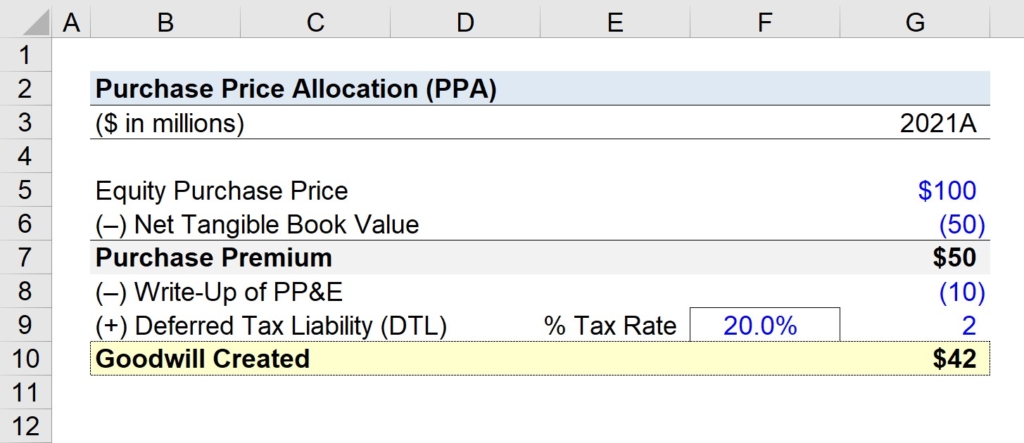Purchase Price Allocation (PPA)
Attorneys with you, every step of the way
Count on our vetted network of attorneys for guidance — no hourly charges, no office visits.
2000+
businesses
Helping entrepreneurs turn ideas into
businesses over 2000+ times in Russia.
1500+
consultations
Providing access to our independent
network of attorneys over 1500 times.
90+
liquidations
Helping companies to close down operations in the smooth way
Purchase Price Allocation (PPA) is an acquisition accounting process of assigning a fair value to all of the acquired assets and liabilities assumed by the target company.

How to Perform Purchase Price Allocation (Step-by-Step)
Once an M&A transaction has closed, purchase price allocation (PPA) is necessary under accounting rules established by IFRS and U.S. GAAP.
The objective of purchase price allocation (PPA) is to allocate the price paid to acquire the target company and to allocate them to the target’s purchased assets and liabilities, which must reflect their fair value.
The steps to performing purchase price allocation (PPA) are the following:
- Step 1 → Assign the Fair Value of Identifiable Tangible and Intangible Assets Purchased
- Step 2 → Allocate the Remaining Difference Between the Purchase Price and the Collective Fair Values of the Acquired Assets and Liabilities into Goodwill
- Step 3 → Adjust Newly Acquired Assets of the Targets and Assumed Liabilities to Fair Values
- Step 4 → Record Calculated Balances on the Pro-Forma Balance Sheet of the Acquirer
Purchase Price Allocation (PPA): Asset Sale Adjustments in M&A
Upon transaction close, the acquirer’s balance sheet will contain the target’s assets, which should carry their adjusted fair values.
The assets most likely to be written up (or written down) are the following:
- Property, Plant & Equipment (PP&E)
- Inventory
- Intangible Assets
Moreover, the fair value of the tangible assets – most notably, property, plant & equipment (PP&E) – serves as the new basis for the depreciation schedule (i.e. spreading out the capital expenditure across the useful life assumption).
Likewise, the acquired intangible assets are amortized over their expected useful lives, if applicable.
Both depreciation and amortization can have a major impact on the acquirer’s future net income (and earnings per share) figures.
Following a transaction with increased future depreciation and amortization expenses, the acquirer’s net income tends to fall in the initial periods after the transaction close.
Goodwill Creation Accounting from Fair Value Adjustments (FMV)
To reiterate from earlier, goodwill is a line item designed to capture the excess purchase price over the fair value of the target company’s assets.
The majority of acquisitions contain a “control premium,” since an incentive is typically needed for the sale to be approved by existing shareholders.
Goodwill functions as a “plug” that ensures the accounting equation remains true post-transaction.Assets = Liabilities + Equity
The goodwill recognized after purchase price allocation is typically tested for impairment on an annual basis but cannot be amortized, although the rules have been modified for private companies.
Identifiable Intangible Assets in M&A Accounting
If an intangible asset meets either or both of the criteria below – i.e. is an “identifiable” intangible asset – it can be recognized separately from goodwill and be measured at fair value.
- The intangible asset is related to contractual or legal rights, even if the rights are not separable/transferable.
- The intangible asset can be separated from the acquisition target and be transferred or sold without restrictions regarding transferability.
Step 1. M&A Transaction Assumptions
Fundamentally, the purchase price allocation (PPA) equation sets the assets acquired and liabilities assumed from the target equal to the purchase price consideration.
Let’s say, for instance, that an acquisition target was acquired for $100 million.
Step 2. Calculate Book Value and Allocate Purchase Premium
The next step is to calculate the allocatable purchase premium by subtracting the target’s net tangible book value from the purchase price.
Net Tangible Book Value = Assets – Existing Goodwill – Liabilities
Note the existing goodwill of the target from earlier transactions is wiped out, and the previous carrying value must be excluded.
In addition, the shareholders’ equity account – assuming it is an acquisition of 100% of the target – must also be wiped out.
Here, we’ll assume the net tangible book value is $50 million, so the purchase premium is $50 million.
- Purchase Premium = $100 million – $50 million = $50 million
Step 3. PP&E Write-Up Tax Implications and Goodwill Calculation
Moreover, there was also a PP&E write-up adjustment of $10 million post-deal, so the goodwill can be calculated by subtracting the fair value write-up amount from the net tangible book value.
But the tax implications from the write-up must not be forgotten, as deferred tax liabilities (DTLs) are created from the PP&E being written up.
Deferred taxes arise from the temporary timing difference between GAAP book taxes and the cash taxes actually paid to the IRS, which impacts the depreciation expense (and GAAP taxes).
If cash taxes in the future exceed book taxes in the future, a deferred tax liability (DTL) would be created on the balance sheet to offset the temporary tax discrepancy.
While the incremental depreciation stemming from the PP&E write-up (i.e. increased carrying value) is deductible for book purposes, they are NOT deductible for tax reporting purposes.
Assuming a 20% tax rate, we’ll multiply that rate by the PP&E write-up amount.
- Deferred Tax Liability (DTL) = $10 million * 20% = $2 million
Goodwill Created = Purchase Price – Net Tangible Book Value – Fair Value Write-Up + Deferred Tax Liability (DTL)
Once we input our assumptions into the goodwill formula, we calculate $42 million as the total goodwill created.
- Goodwill Created = $100 million – $50 million – $10 million + $2 million
- Goodwill Created = $42 million

